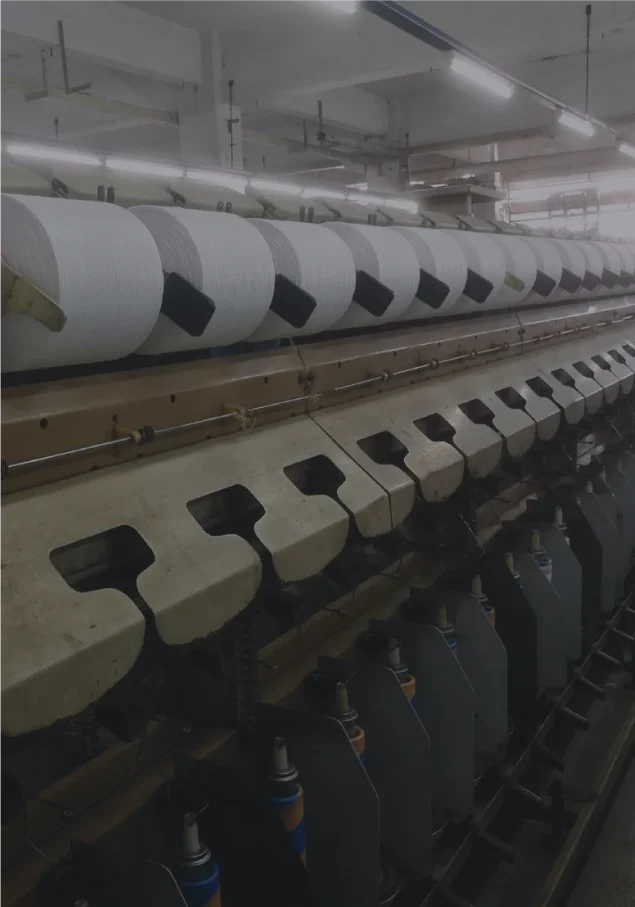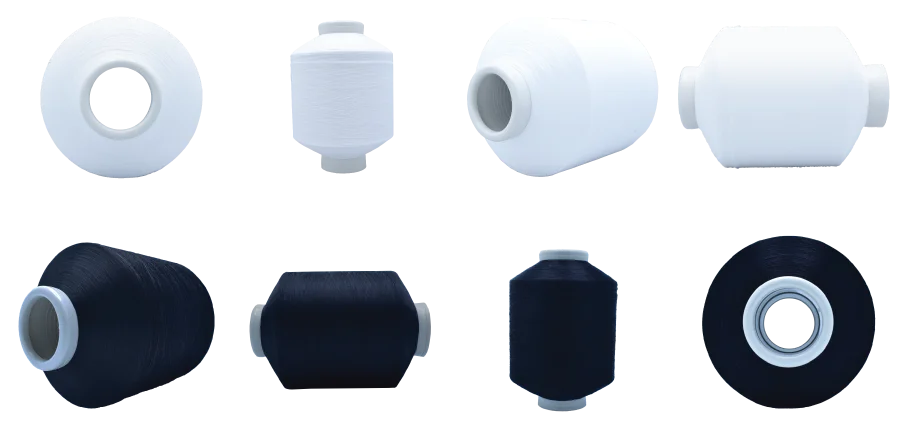Twisted
Yarn
Twisted yarn combines multiple fibers, threads, or yarn in a wrapping (twisting) motion. For example, twisting fibers will create a thread (or single yarn), twisting threads will create a yarn, and twisting yarns will create a cord or cable - and so on.
What is
twisted yarn?
The twisted yarn process refers to the process where one end of a fiber strand is held and the other end is turned back to form a yarn.
For staple fibers, twisting is necessary to turn the fibers into yarns. Before twisting, the
loose fibers usually coalesce into a fiber strip.
After twisting, the outer fibers are compressed inward, creating centripetal pressure, which causes the strand to gain friction along the direction of the fiber elongation.
Twisting creates a compact structure that is not easily damaged by lateral external forces, and twisting also creates textured filaments and novelty yarns for filament yarn and ply yarn. In addition, the amount and direction of the twist affect the feel and appearance of fabrics and their intrinsic quality.
After twisting, the outer fiber is twisted back in an inclined spiral. The fiber is twisted and deformed. Yarns are held together, changing the fibers' collective structural form and mechanical and physical properties.

Types of twisted
and how to identify them?
Twisted yarn can be classified into 2 types depending on the twisting direction.
- S twisted yarn is the left twisted
- Z twisted yarn is the right twisted
The fiber alignment on yarns indicates whether it is an S or Z twist. The regular weaving industry usually used a Z twisted yarn. The twisting direction can be observed by holding the yarn in a vertical position. If the twisting direction of the slope of the center part of the letter “S”, the yarn has an S twist. If the yarn spiral conforms to the letter “Z” slope, the yarn has a ‘Z” twist.
Twist:
The number of twisting rounds
per yarn unit length.
2 sections of the yarn produce an angular displacement of 360°, which becomes a twisting round, commonly referred to as one turn.
Yarns are generally twisted in the Tex system, expressed as the number of twisting rounds per 10cm of yarn length. For combed woolen yarns and chemical filaments, use the metric count system, expressed as the number of twisting rounds per meter. In addition, there is the English count system, defined as the number of twisting rounds per inch.

Twist affects the yarn's strength, flexibility, elasticity, and shrinkage. If the twisted increases, the strength of the yarn would be increased, but the twist must not exceed a certain threshold. Otherwise, the strength decreases, which is called the critical twist of the yarn. the critical twist varies depending on the yarn material made from different raw materials. In general, as long as the strength requirements are met, less twist is generally preferred, because increased twist makes the yarn stiffer to the touch, less elastic and more shrinkage. This is the reason why filament yarns are twisted as little as possible.
How is twisted yarn measured?
Most fabrics are made with ordinary yarn twisted. This is the amount necessary to hold the fibers close enough together to prevent them from slipping apart. Thus gives strength to the yarn.
The number of twists per inch is measured by the number of twists per inch.
Low twisted – 0 to 3 twists per inch
Ordinary twist - 4 to 7 twists per inch
High twisted – 8 to 12 twisted per inch

This website uses to ensure you get the best experience on our website. Privacy policy




